Are you here because you’re frustrated and have been asking yourself, “Why aren’t my hydrangeas blooming?”
While growing flowers is simple most of the time, the reality is that many things could cause your flowers not to bloom. Let’s take a look at why your hydrangeas aren’t blooming. They’re such a beautiful flower, so seeing them seemingly hibernate feels like a waste!
TLDR: Why Won’t They Bloom?

Image Credit: Depositphotos.
As a seasoned gardener who loves hydrangeas, I’ve found the main reasons why hydrangeas are not presenting you with beautiful blooms include the following:
- Fluctuations in temperature
- Too much sun exposure, or not enough sun exposure
- The age of the plant, depending on the species
- Lack of knowledge when feeding and pruning hydrangeas
Green thumb or not, hydrangeas are an excellent plant to grow. They are arguably one of the most beautiful garden plants around, once in full bloom. Even if you’re a new gardener, you can learn how to make the best of this gorgeous flowering plant. However, it’s important to know the type of hydrangea you have and understand the season in which it blooms best. Sometimes the hydrangea variety can impact when it blooms and other details about the best care of the plant.
Hydrangeas are low-maintenance and give gorgeous flowers that will satisfy anyone, especially first-time growers. However, some gardeners need just a bit of help getting them going. When something goes wrong, though, it can be crushing, so let’s take a closer look at what might be happening if yours aren’t blooming.
When Should Hydrangeas Bloom?
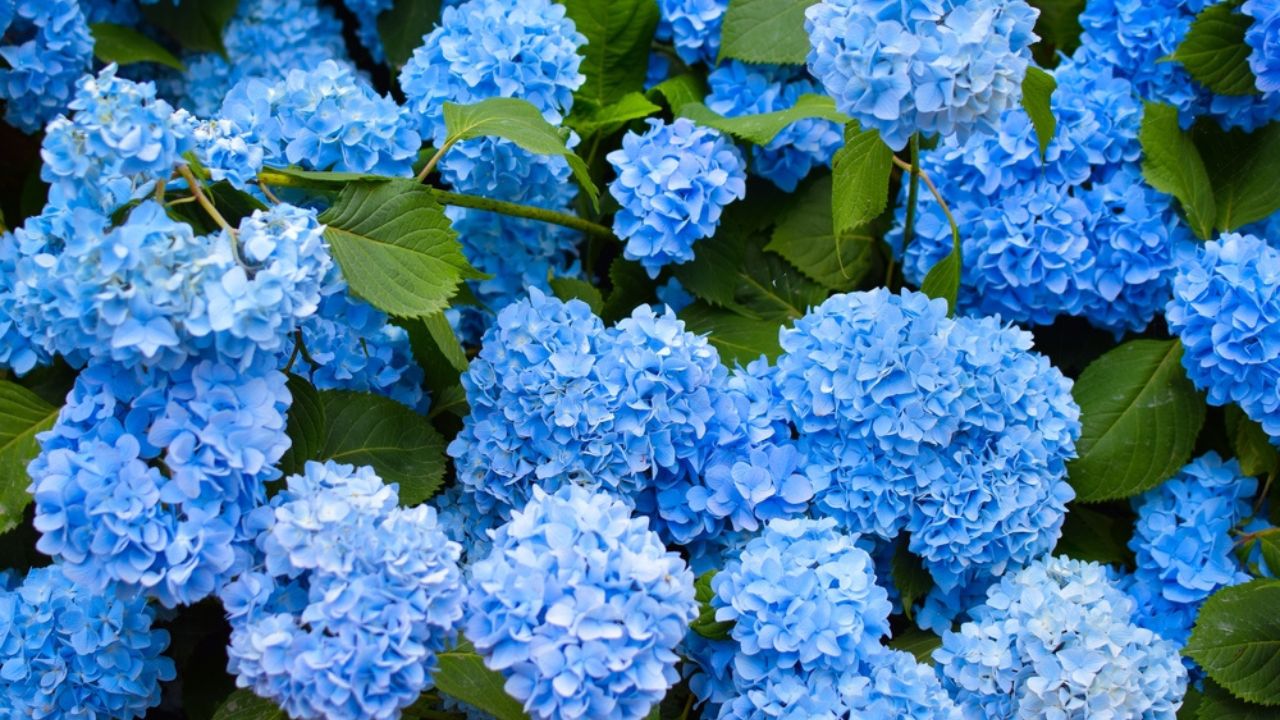
Image Credit: Shutterstock.
In full bloom, the hydrangea is a beautiful, magnificent plant with gorgeous pink flowers (or blue or purple, depending on the soil’s acidity). We see them in gardens all over the country, in home decor, and in beautiful bouquets at weddings and other events.
If you are trying to grow your own but have become disheartened that they won’t bloom, you must first take a few simple troubleshooting steps. Usually, the problem is something simple. It’s all about learning to identify the issue so you can correct it. First, do you know what season they are supposed to bloom?
Suppose you have taken care of your hydrangeas well enough and are feeding them twice a year while ensuring the fertilizer is designed for acid-loving plants (given they are old enough); they should start blooming in mid-spring and continue through late fall, depending on the variety you have.
It’s also important to check your hardiness zone because different areas may have slightly different blooming times.
If you’ve waited eagerly for the first flowers to appear, only to become disillusioned when nothing happens, you’re not alone! What are the reasons your hydrangeas are not producing any flowers?
Why Aren’t My Hydrangeas Blooming? First, Consider the Age and Type
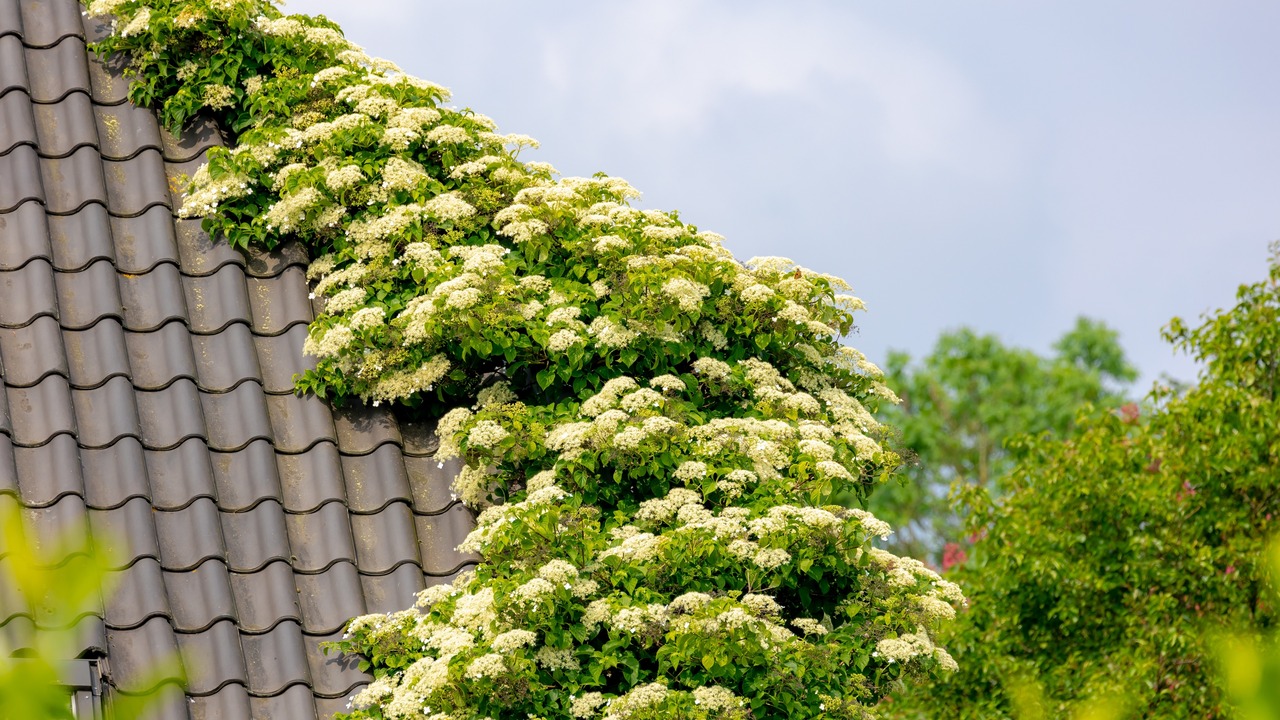
Image Credit: Shutterstock.
Before you can figure out why your hydrangea plant isn’t blooming, see which type of hydrangeas you have:
- Smooth hydrangea
- Bigleaf hydrangea
- Oakleaf hydrangea
- Mountain hydrangea
- Climbing hydrangeas
- Panicle hydrangea
Some of these varieties can take up to 5 years to mature enough to start showing signs of blooming. Keep this in mind if you have planted them recently. As long as you ensure all the other conditions are right, sometimes you must give them time to bloom.
Other Troubleshooting Ideas
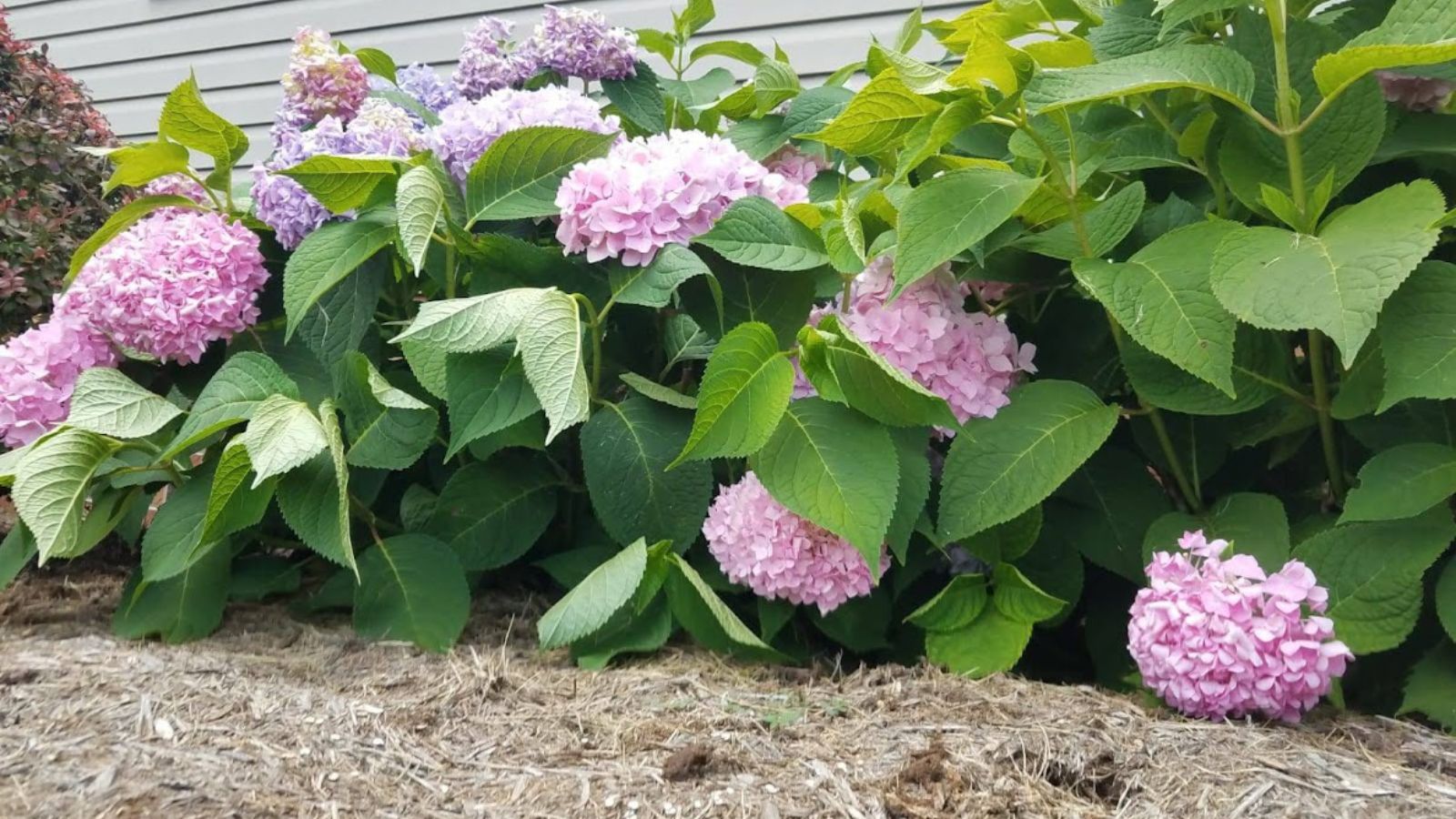
Image credit: Backyard Garden Lover.
Beyond knowing when and how they bloom, other considerations related to plant health and blooms include:
Where you plant your hydrangeas is essential. Hydrangeas will require 4-6 hours of sunlight per day to thrive and bloom nicely. Dappled sunlight is best, but your hydrangea can also tolerate direct sunlight.
Weather is another factor to pay close attention to. The buds of the hydrangea plant are extremely sensitive to the cold. A late spring cold snap could be causing blooming problems.
The fertilizer you use will affect the outcome of your hydrangea’s foliage and blooming. The fertilizer must not have a very high nitrogen content.
Incorrect pruning of the plant. Correct pruning will depend on what type of hydrangeas you have. There are three types: those that can only bloom on old wood, those that bloom on new wood, and those that bloom on both old and new wood.
How To Help Your Hydrangeas Bloom

Image Credit: Shutterstock.
Not all hydrangeas will be affected by the same issues. For example:
- Some varieties are more sensitive to fertilizer
- Some can be very sensitive to cold weather and need to be protected from it, but another variety can be hardier
- In the same way, lighting and location can affect certain varieties of hydrangeas but not others
So, find out what hydrangeas you have because the solution might differ depending on your type. Once you have identified which hydrangeas you have, you are a step closer to solving the problem of your hydrangeas not blooming. Let’s now look closer.
1. Use Proper Pruning
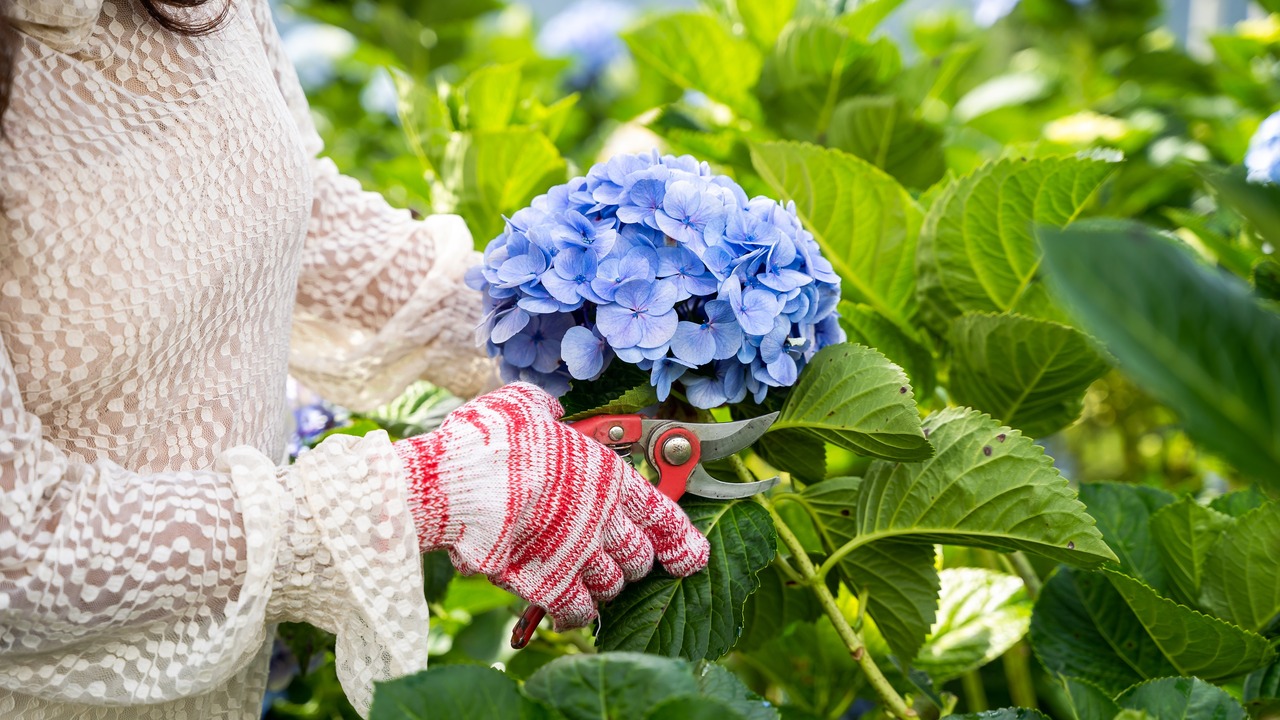
Image Credit: Shutterstock.
Make sure you know if your plants bloom on new or old wood, and prune accordingly. If you have pruned your hydrangeas, you may have cut off the buds that were supposed to bloom on old wood. If so, you will have to wait until you have regrowth.
2. Take Appropriate Measures for Weather Extremes
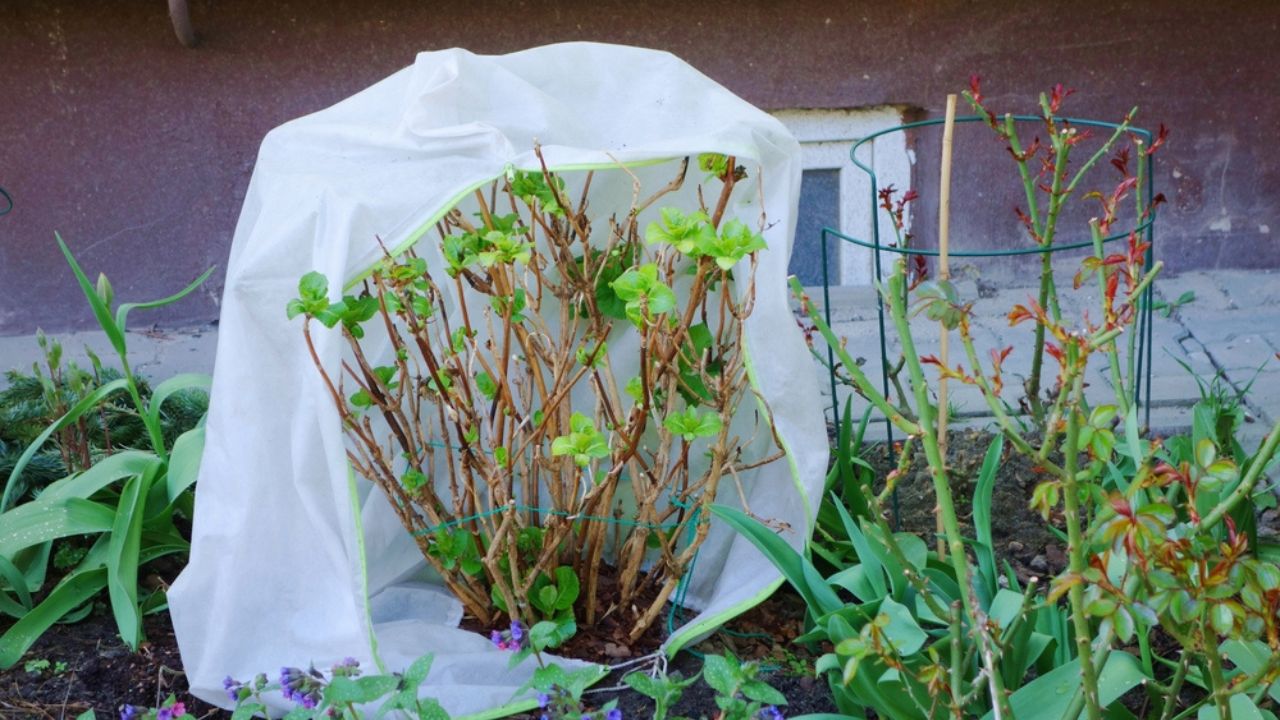
Image Credit: Shutterstock.
If you have a type of hydrangea sensitive to the weather or a hard winter that didn’t protect your plants, they might have sustained damage and will not bloom that year. Make sure you mulch around your plants to keep them safe from really cold spells.
Cold weather can prevent your hydrangeas from blooming due to frost killing the flower buds, as mentioned above. If your hydrangeas are too cold, you should move them if possible. If moving your hydrangea is impossible, use frost netting and wrap them to protect them from the cold. This is a great way to prevent them from freezing so that they do better when spring and summer blooming time arrives.
3. Use the Proper Location for Planting

Image Credit: Shutterstock.
Sometimes your hydrangeas might be getting too much shade, or an animal (most likely a deer) could have damaged them. If so, it would be best to move your hydrangeas into an area with a more reliable source of sunlight and take precautions to keep animals away.
A good place to move it might be in front of the house. Here are some ideas for using hydrangeas in landscaping the front of the house.
4. Wait for Your Plants to Mature
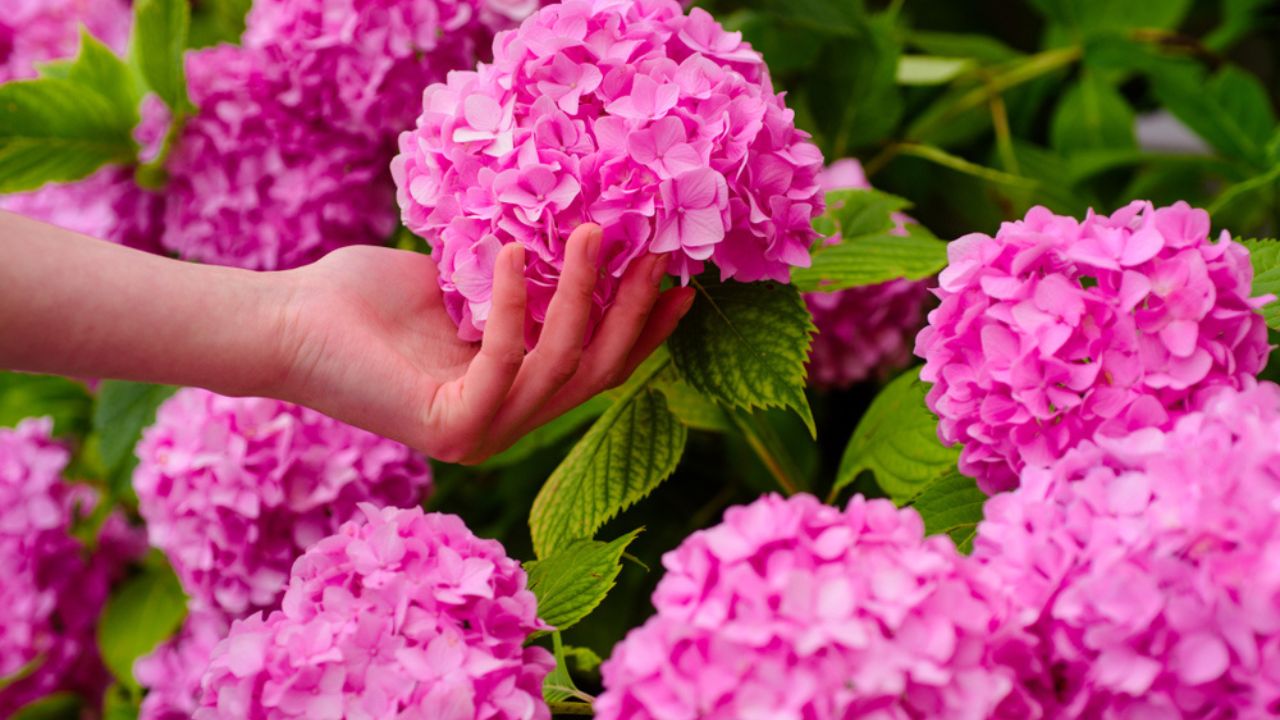
Image Credit: Shutterstock.
How old are your hydrangeas? When were they planted? Plants younger than two years old will need more time to mature and build a robust root system. Be patient, and you’ll be rewarded with beautiful flowers.
5. Use the Correct Fertilizer

Image Credit: Shutterstock.
The type of fertilizer that you feed your hydrangeas is imperative to flowering. The ideal fertilizer ratio of N-P-K (or Nitrogen-Phosphorus-Potassium) for hydrangeas is 8-16-6. The fertilizer should have an acidic pH. If you’re unsure about this, talk to an expert from your local garden center to help you choose the right fertilizer.
You Can Do It!

Image Credit: Shutterstock.
When your hydrangeas are not blooming, you can narrow down the list of causes to cold weather, sunlight, the age, depending on the species, the type of fertilizer, and how you or the wildlife in your area are pruning the plant.

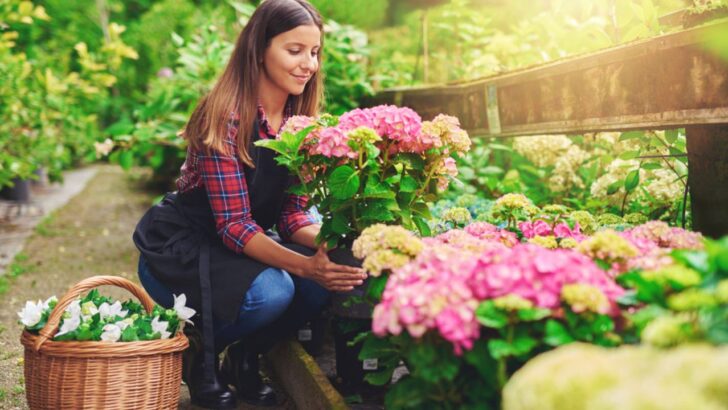

Beautiful Red Flowering Shrubs That Make Your Landscape Pop
Tuesday 28th of February 2023
[…] why aren’t my hydrangeas blooming? […]
9 Beautiful Companion Plants For Hostas
Sunday 7th of August 2022
[…] why aren’t my hydrangeas blooming? […]